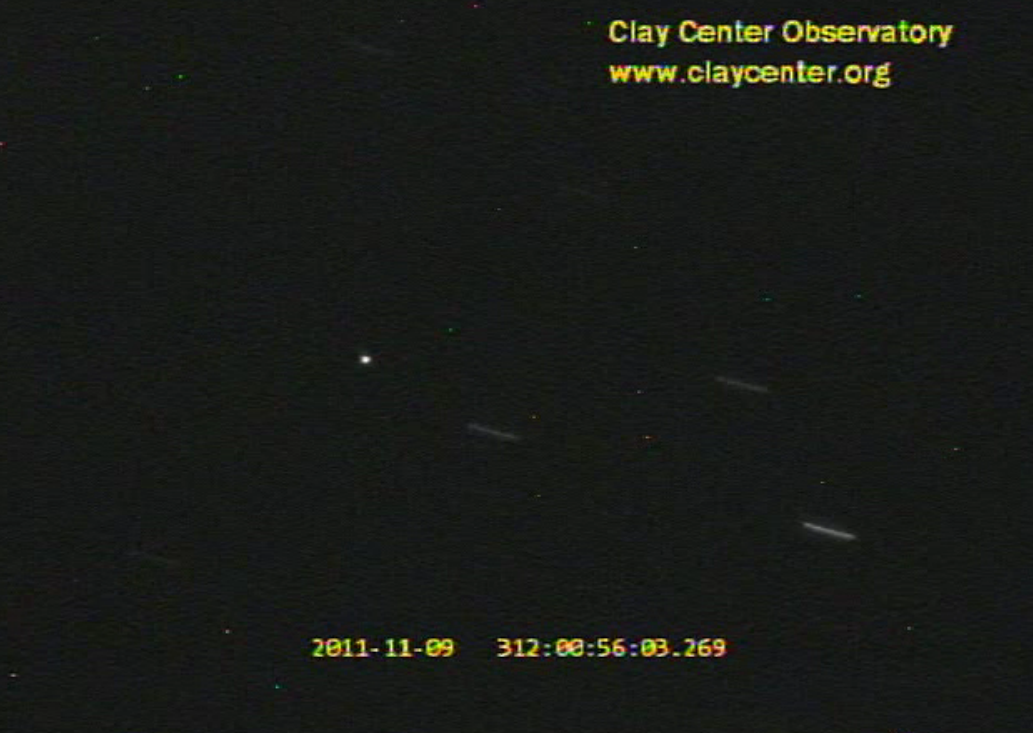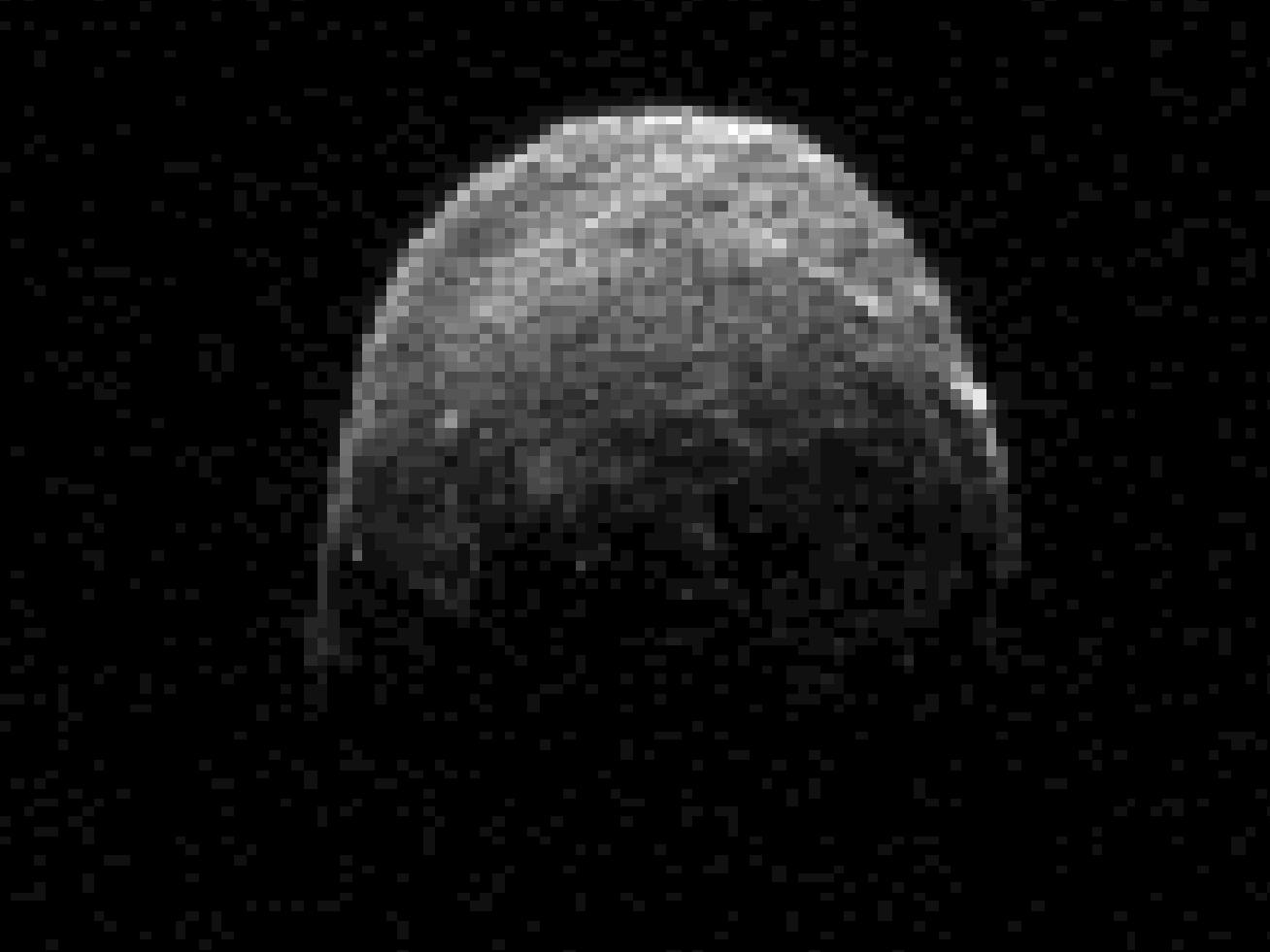Asteroid Flyby: How Students Helped World See Giant Space Rock 2005 YU55

The huge asteroid 2005 YU55 was small and dim in the sky during its close Earth approach yesterday (Nov. 8), but a handful of high-school students helped it blaze bright on computer screens around the world.
The Clay Center Observatory in Brookline, Mass., tracked 2005 YU55 with its 25-inch (64-centimeter) telescope as the big space rock flew by Earth Tuesday evening, then webcast the resulting images live around the world. And three high school kids from Brookline's Dexter School were in charge of making it happen.
"We're running the telescope and viewing and taking pictures of the asteroid," junior Sam Lapides told SPACE.com on Tuesday. "There are some advisers who are helping us if we run into any problems. But overall, it is student-based and student-run."
A rare chance to see a big asteroid
At 1,300 feet (400 meters) wide, 2005 YU55 is about the size of a city block. It came within 201,700 miles (324,600 kilometers) of Earth Tuesday at 6:28 p.m. EST (2328 GMT) — closer than the moon, which orbits about 240,000 miles (386,200 km) from us on average. [Photos of Asteroid 2005 YU55]
Though there was never a chance the asteroid would strike our planet, the flyby was still historic. Such a big space rock hasn't come so near to Earth since 1976 and won't again until 2028, researchers said.
Astronomers around the world trained a suite of instruments on 2005 YU55, eager to learn as much as possible about the space rock before it receded once again into the depths of space.
Breaking space news, the latest updates on rocket launches, skywatching events and more!
Those instruments included the huge radio telescopes at the Arecibo observatory in Puerto Rico and NASA's Deep Space Network facility in Goldstone, Calif. — and the Clay Center Observatory's 25-inch scope.
The Clay Center's live video feed brought 2005 YU55 down to Earth for thousands of armchair astronomers, showing the space rock as a bright white dot. Stars appeared to streak past it, a result of the telescope locking onto and following the fast-moving asteroid.
Appreciating astronomy
The private, K-12 Dexter and Southfield Schools (Dexter is for boys and Southfield for girls) run the Clay Center Observatory. 2005 YU55's close approach provided a dual opportunity to do public outreach and give astronomy-minded students some real-world experience, school officials said.
Dexter freshman Nick Weber was in charge of tracking the asteroid, with help from fellow freshman Nick Veo and Lapides. Faculty advisers were on hand to guide them and lend a hand in case any difficulties cropped up, the students said.
In addition to airing the webcast, the observatory also opened its doors to the public, welcoming several hundred people over the course of the night, according to school officials.
Weber said he hoped everybody who stopped by in person or on the Web got something out of the experience.
"I hope they get that astronomy and science is really cool, and it can be done even just a few miles outside of Boston," he told SPACE.com. "You can do astronomy anywhere, as long as you have an interest."
Veo voiced similar sentiments.
"I think it's great," Veo told SPACE.com. "It's just more people that we get to share our information with, and they get to experience it along with us."
And the project certainly reached a lot of people. By 10 p.m. EST Tuesday night (0300 GMT Wednesday), more than 61,000 people had tuned in to the observatory's webcast, according to the counter on the video feed.
You can follow SPACE.com senior writer Mike Wall on Twitter: @michaeldwall. Follow SPACE.com for the latest in space science and exploration news on Twitter @Spacedotcom and on Facebook.

Michael Wall is a Senior Space Writer with Space.com and joined the team in 2010. He primarily covers exoplanets, spaceflight and military space, but has been known to dabble in the space art beat. His book about the search for alien life, "Out There," was published on Nov. 13, 2018. Before becoming a science writer, Michael worked as a herpetologist and wildlife biologist. He has a Ph.D. in evolutionary biology from the University of Sydney, Australia, a bachelor's degree from the University of Arizona, and a graduate certificate in science writing from the University of California, Santa Cruz. To find out what his latest project is, you can follow Michael on Twitter.

